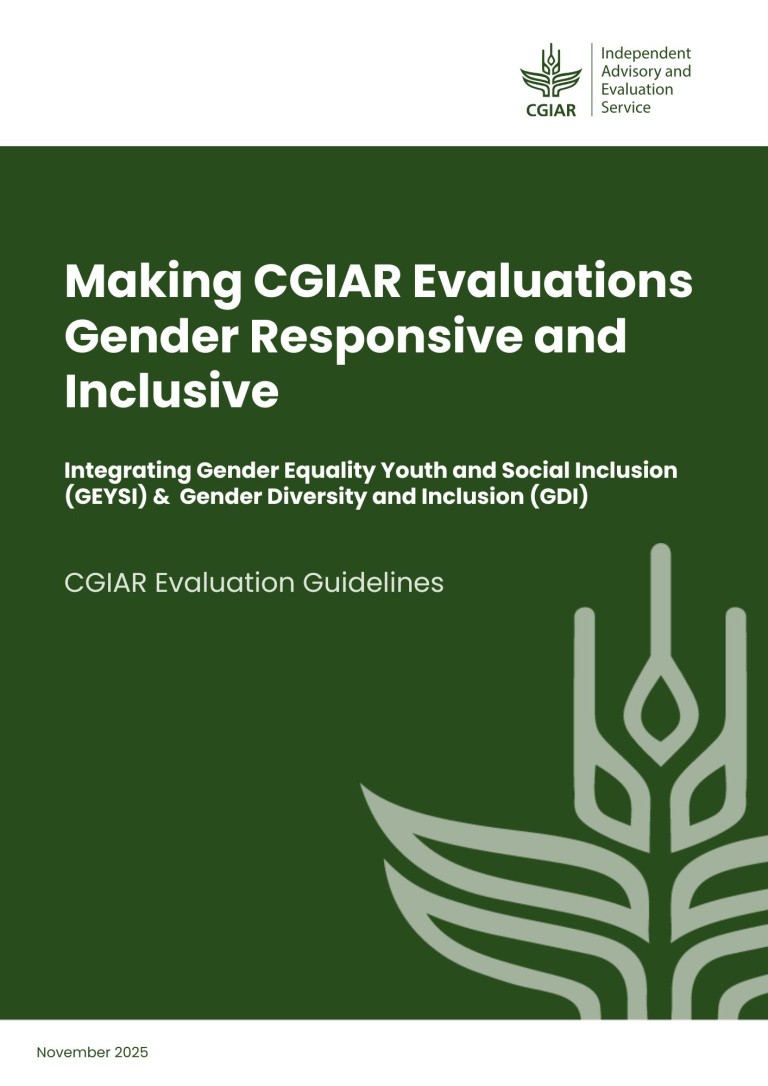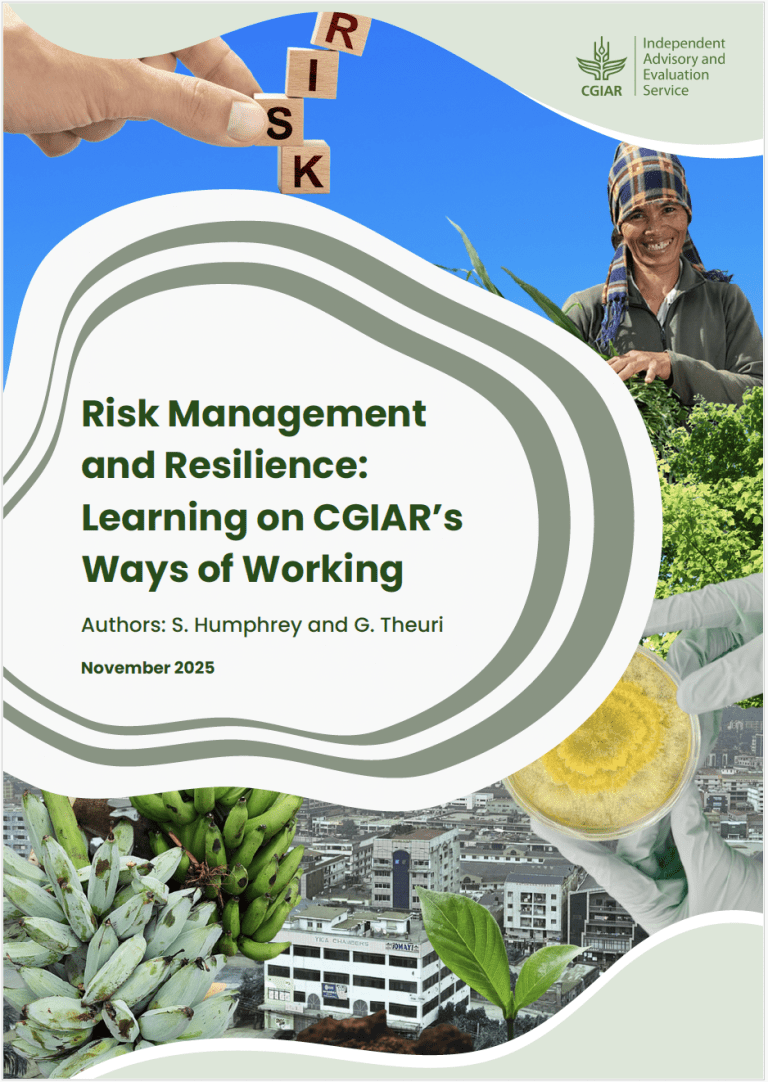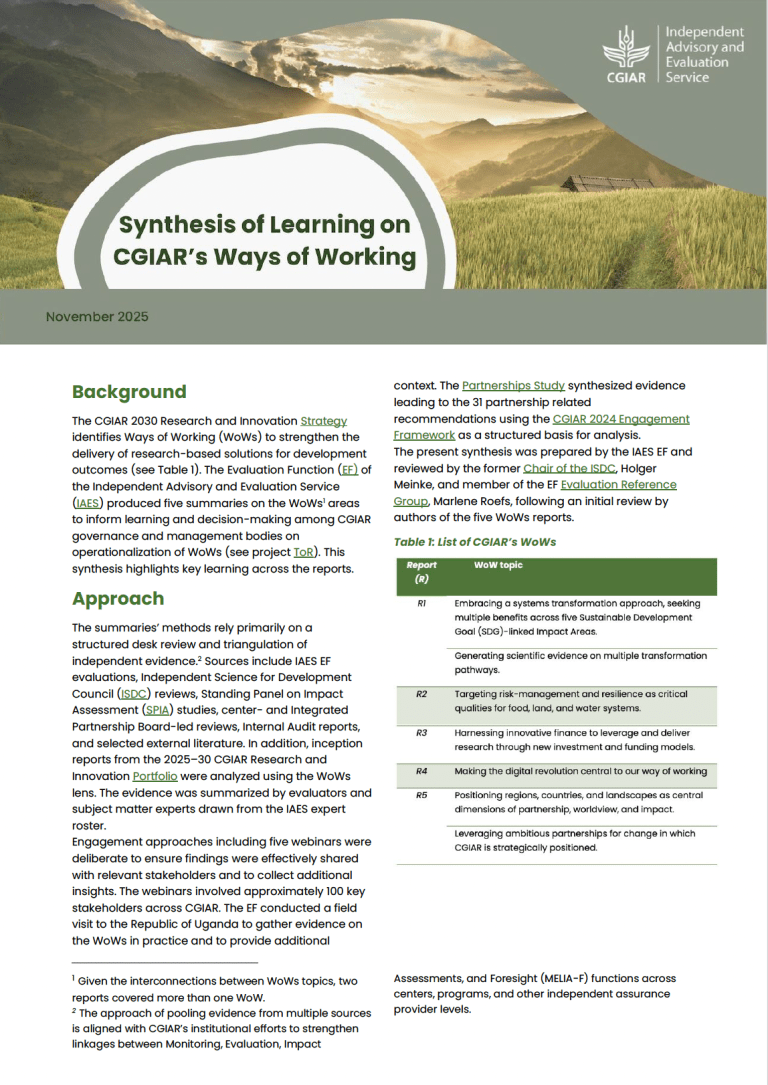Why AI in Evaluation, and Why Now?
Artificial Intelligence (AI) is no longer just a buzzword. It's already reshaping how we live, work, and make decisions. In international development, evaluation plays a critical role in generating evidence, guiding decisions, and ensuring accountability. But with increasing data complexity, limited time, and growing expectations for inclusivity and learning, many evaluators have been asking: Can AI help us evaluate better?
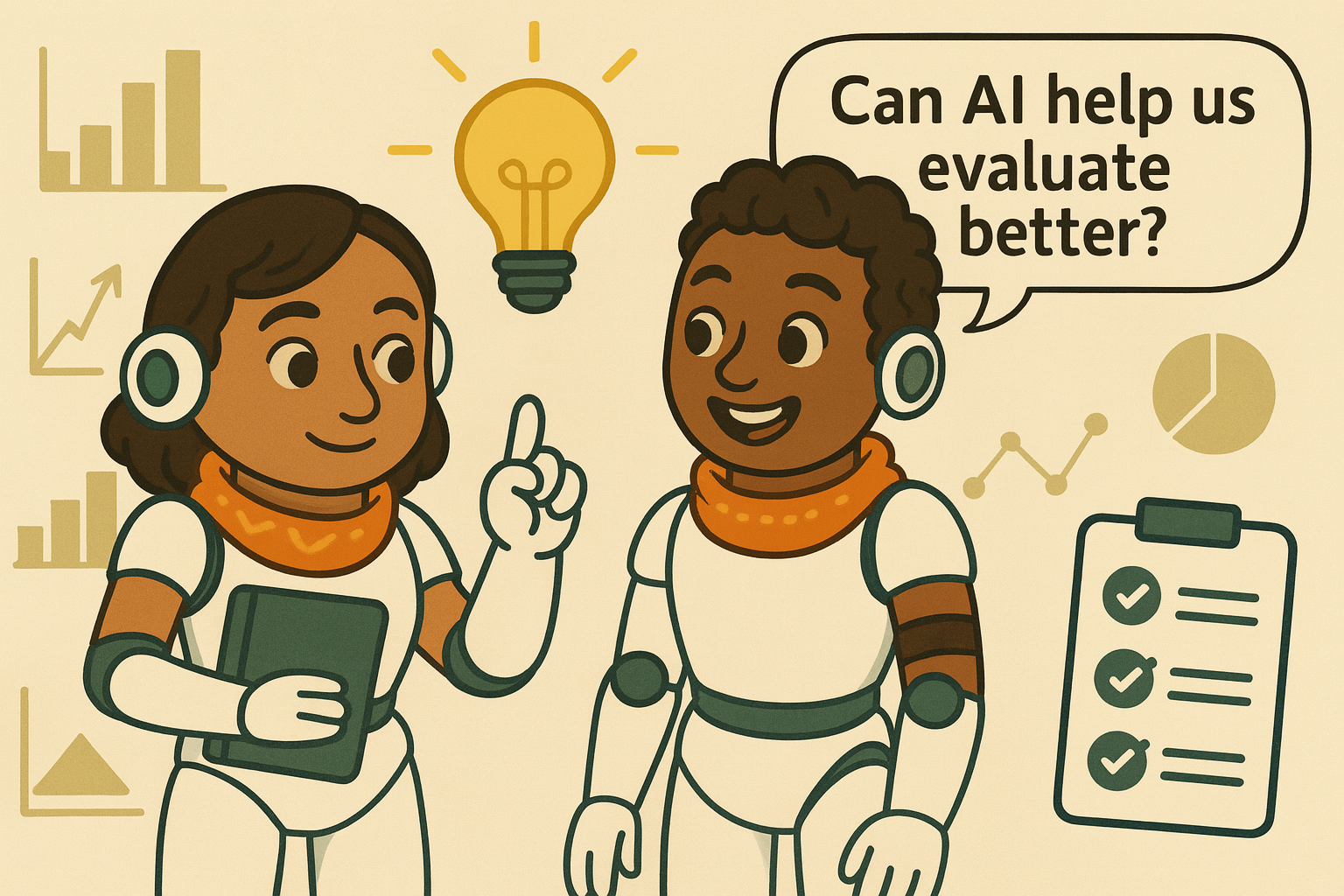
That question took center stage at our session during the recent gLOCAL Evaluation Week, where we unveiled a new resource for evaluators everywhere and sparked lively discussions on the opportunities and challenges AI brings to the field. The event drew participants from over 20 countries, from Kenya to Germany, India to Mexico, including colleagues across the CGIAR network and beyond.
What emerged from the conversation powerfully confirmed our core assumptions. Participants raised the very questions evaluators around the world are grappling with: How can we stop AI from fabricating information instead of drawing from trusted sources? What's the right way to disclose AI use in evaluations? How do we ensure consistent AI outputs regardless of who's asking the questions? How well does AI handle raw qualitative data like interview transcripts? And has it actually made evaluations more cost-effective? These questions reinforced the very motivation behind developing this resource: a growing demand for practical guidance and real-world examples to help evaluators navigate AI both responsibly and effectively. To that end, CGIAR’s Evaluation Function is launching a new resource:
AI Tools: Considerations and Practical Applications for the Evaluation Function of CGIAR
This technical note isn't meant to be just another guide—it's designed to spark conversation. It’s not a checklist. Not a how-to manual. It’s a practical toolkit—and a conversation starter.
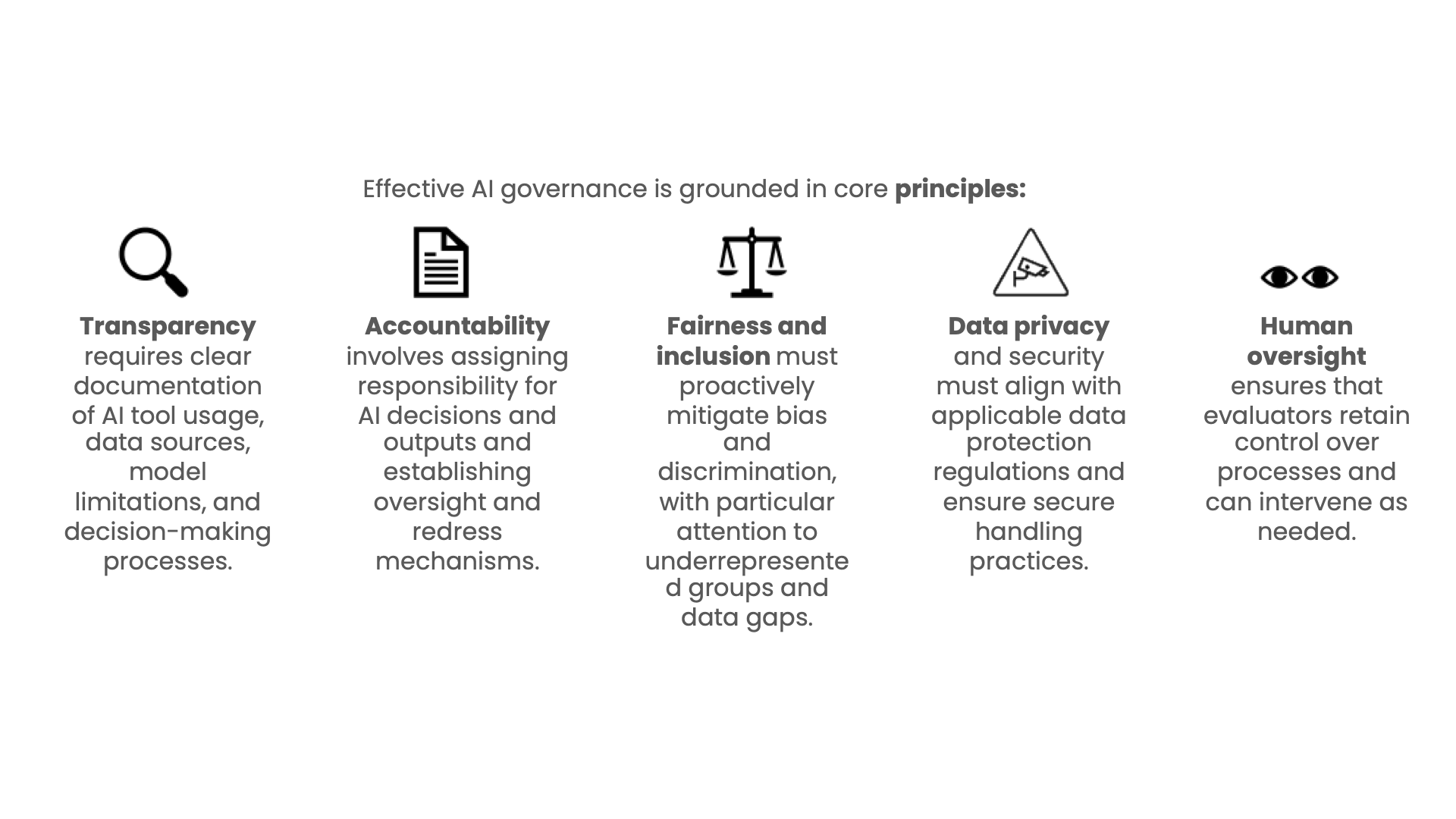
We created it to support staff, consultants, and partners of Evaluation Function (EF) who are beginning to explore how to thoughtfully and responsibly integrate AI into their evaluation work. The reality is simple: AI is already part of our ecosystem. The real question is—are we using it wisely?
Why Should Evaluators Care About AI?
Evaluation work is complex. We juggle interviews, surveys, reports and data—often under tight deadlines. AI tools promise to lighten the load by offering transcription, translation, summarization, and analysis at unprecedented speed and scale.
But the potential goes beyond speed and efficiency. AI can enhance the quality and inclusivity of our work by uncovering hidden patterns in complex datasets, helping design more responsive surveys, and transforming dense technical findings into accessible insights for diverse audiences. In short, AI opens doors not just for faster work, but deeper, better work.
Yet, this promise comes with pitfalls. CGIAR's own research shows how AI can perpetuate bias, particularly around gender roles in agriculture. A recent study testing large language models with questions from women farmers in India exposed troubling gaps: AI outputs that reinforced stereotypes, missed structural inequalities, and offered guidance that sounded helpful but ignored real-world constraints.
The takeaway is clear: AI can assist, but evaluators must stay in the driver's seat.
What’s Inside the New AI Technical Note?
Whether you’re exploring AI for the first time or refining how you use it in your workflows, the Note offers tools, insights, and real-world examples you can apply right away. Here's what it covers:
- Primer on AI and Generative Artificial Intelligence (GenAI): What it is, how it works, and why it matters for evaluation
- Ethical guidance: addressing bias, privacy, transparency, and the need for human oversight
- Use cases: Real-world examples across the evaluation cycle—from design to data collection, analysis, and dissemination
- Tools and prompts: Practical tips to help you test and apply the right solutions
- Supervision strategies: Ensuring AI remains a support, not a substitute
- Building 'AI muscle': Encouraging experimentation, reflection, and shared learning
As AI technology—and the policies surrounding it—continue to evolve, so will this resource.
Where Can AI Add Real Value in Evaluation?
This Note outlines several areas where AI can make a meaningful difference. Here are just a few:
- Text Processing: Automate transcription, summarize lengthy reports, and translate documents, to improve accessibility and make multilingual work more feasible.
- Evidence Management: Need to review 50 documents fast? AI tools can help extract, compare, and synthesize evidence from multiple sources, building stronger analytical foundations.
- Evaluation Design: Suggest appropriate methods, generate theories of change, and co-create survey questions.
- Data Analysis: Identify trends, conduct sentiment analysis, and build visualizations—while ensuring human evaluators interpret results in context.
- Communication: Generate briefing notes, visuals, and even podcast scripts to engage diverse audiences in accessible formats
The goal is purposeful integration: using AI where it adds value, while safeguarding space for critical thinking and contextual interpretation.
What Should We Watch Out For?
While AI brings power, it also introduces complexity and risk. Responsible evaluators must ask the hard questions:
- Who decides what counts as “truth” in AI outputs?
- Whose knowledge is prioritized and whose is left out?
- How do we protect privacy when inputting sensitive data?

What happens when AI-generated outputs sound confident but are simply wrong?
The Note underscores the need for multi-level oversight—to ensure accuracy, fairness, ethics, and epistemological awareness. It’s not just about what AI says, but how it shapes what we come to believe as true.
Key principle: Document how AI is used, test tools critically, and understand where your data goes. These aren’t optional steps—they’re essential to responsible evaluation.
Who Is This Note For?
This resource is designed for anyone involved in evaluation—within and beyond CGIAR:-
- Internal staff designing or managing evaluations
- Consultants drafting frameworks or analyzing data
- Policymakers who commission evaluations
- Organizations developing AI-related policies
Whether you’re experimenting with AI tools or simply curious about their implications, this Note provides a solid foundation for responsible, reflective practice.
Join the Conversation AI is transforming the evaluation landscape, but we must shape its role intentionally. That means leading with curiosity, caution, and collaboration.
We invite you to explore the CGIAR AI Technical Note, test the tools, and join the global conversation on what meaningful, ethical AI in evaluation should look like. Our gLOCAL session confirmed what we suspected: there’s strong interest across the evaluation community before clear, practical guidance on how to engage with AI. The questions raised- from hallucination risks to disclosure practices, to output consistency and the challenges of analyzing qualitative data – show that evaluators around the world are navigating similar terrain.
Let's not just adapt to AI. Let's shape its role in our work and ensure it upholds the values of equity, participation, and learning that define great evaluation.
Download the Technical Note: Considerations and Practical Applications for the Evaluation Function of CGIAR.
Explore the Evaluation Method Notes Resource Hub

